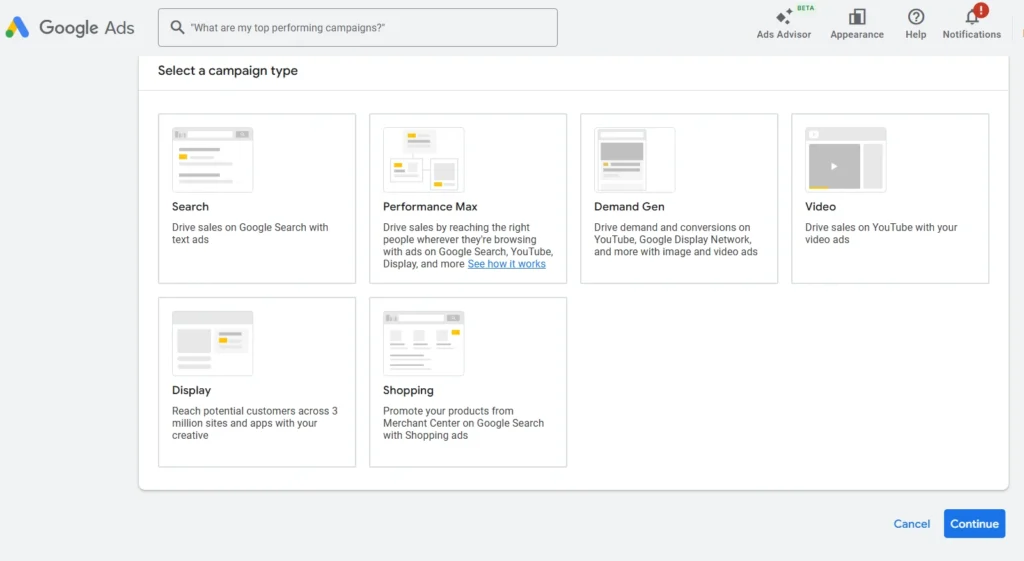Search Engine Optimization (SEO) is no longer just about using the right keywords or building backlinks. It has evolved into a complex strategy where understanding how users interact with your website plays a pivotal role. This is where user behaviour analysis comes in. By studying how visitors navigate your site, what they click on, and how long they stay, businesses can gain valuable insights that directly impact SEO performance. When you understand your audience’s behaviour, you can optimize your site to not only rank higher but also to provide a better user experience that keeps them engaged, which search engines reward with better rankings.
What is User Behaviour Analysis?
User behaviour analysis refers to the process of understanding how visitors interact with your website. It involves tracking and analyzing various actions that users take, such as where they click, how long they stay on a page, and how they navigate through the site. These interactions provide crucial insights into what content resonates with your audience, how engaging your site is, and whether users are finding the information they need.
Common user behaviour metrics include:
- Bounce Rate: The percentage of visitors who leave your site after viewing only one page, indicating whether your content is relevant to them.
- Time on Site: The average amount of time visitors spends on your website, reflecting how engaging your content is.
- Click-Through Rate (CTR): The percentage of users who click on a specific link, often used to measure the effectiveness of calls to action or meta descriptions.
- Pages Per Session: The number of pages a user views during a single visit, showing how well your website structure encourages deeper exploration.
To collect data for user behaviour analysis, tools like Google Analytics, Hotjar, and Crazy Egg are commonly used. These platforms track user interactions, generate heatmaps, and record session data, helping you gain a deeper understanding of how visitors engage with your website. This information is essential for optimizing both user experience and SEO strategy.
The Connection Between User Behaviour and SEO
Search engines like Google and Bing increasingly rely on user behaviour signals to determine how well a website meets the needs of its visitors. These signals, such as bounce rate, click-through rates (CTR), and dwell time, give search engines insights into the relevance and quality of your content. When users engage positively with a site—by spending more time, clicking through multiple pages, and completing actions like conversions—search engines view these as indicators that the site is valuable and relevant, rewarding it with higher rankings.

Meeting user expectations is crucial for SEO success. If visitors come to your site but quickly leave due to poor content, confusing navigation, or slow load times, search engines interpret this as a sign that your site isn’t delivering the experience users are looking for. On the other hand, when your website is easy to navigate, loads quickly, and provides valuable content, users are more likely to stay longer, explore more pages, and take action—all of which lead to better rankings.
A good user experience (UX) not only keeps users engaged but also boosts your SEO efforts. Websites that prioritize responsive design, easy navigation, and fast load times tend to perform better in search rankings. Search engines reward websites that offer a seamless experience across devices and deliver content that answers user queries effectively. In short, improving your website’s UX aligns with search engines’ goals of providing the best possible results, making user behaviour analysis an essential part of any SEO strategy.
Key User Behaviour Metrics for SEO
Understanding key user behaviour metrics is essential for refining your SEO strategy and improving your website’s performance. These metrics offer insights into how users interact with your site, allowing you to make data-driven decisions that can positively influence search rankings.
1. Bounce Rate – How It Reflects the Relevance of Your Content
Bounce rate measures the percentage of visitors who leave your website after viewing just one page. A high bounce rate suggests that your content may not be relevant or engaging enough to keep users interested. Search engines view high bounce rates as a signal that your site isn’t meeting user expectations, which can negatively impact your rankings. To improve bounce rate, ensure your content aligns with user intent and provides immediate value.
2. Dwell Time – Impact on SEO Rankings
Dwell time refers to how long a user spends on your page before returning to the search results. It’s an important metric because it reflects the level of interest and engagement users have with your content. Longer dwell times indicate that your content is valuable and informative, which can boost your SEO rankings. To increase dwell time, focus on creating in-depth, engaging content that answers users’ queries effectively.
3. Pages Per Session – The Significance of User Engagement
Pages per session is a metric that tracks how many pages a user views during a single visit. It indicates how engaged visitors are with your website. A higher number of pages per session means users find your content useful and are interested in exploring more of your site. Search engines reward sites that encourage user engagement, so optimizing internal links and creating a logical content structure can help increase this metric.
4. Click-Through Rate (CTR) – How Optimizing CTR Improves Search Ranking
Click-through rate (CTR) measures the percentage of users who click on your website link after seeing it in search results. A high CTR means your title tags and meta descriptions are compelling and relevant to the user’s search intent. Search engines like Google use CTR as a ranking factor, so optimizing these elements can help improve your position in search results. To enhance CTR, focus on writing clear, concise, and engaging meta descriptions and title tags.
5. Conversion Rate – Why Conversions Matter to SEO
Conversion rate refers to the percentage of visitors who complete a desired action, such as signing up for a newsletter, making a purchase, or filling out a contact form. A higher conversion rate indicates that your website is effectively guiding users to act, which can have a positive impact on SEO. Search engines favor websites that successfully meet user needs and lead to conversions, as it signals a strong user experience.
Why Tracking User Behaviour Helps Improve SEO Strategy

Tracking user behaviour is a powerful way to optimize your SEO strategy because it provides concrete data about how visitors interact with your website. By analyzing this information, you can identify opportunities for improvement in content, design, and overall user experience, all of which contribute to better search engine rankings.
1. Identify Areas of Improvement in Content, Design, and User Flow
User behaviour analysis helps you pinpoint weak spots in your website. If visitors are leaving certain pages quickly or not completing desired actions, this could indicate issues with content quality, design elements, or the user journey. By addressing these areas, you can create a more seamless and engaging experience that encourages users to stay longer and interact more with your site, positively affecting your SEO.
2. Optimize Website Structure Based on User Interaction
Understanding how users navigate your website allows you to optimize its structure for better usability and SEO. If analytics show that visitors are struggling to find important information or dropping off at specific points, you can adjust the layout, improve internal linking, or reorganize content to make it more intuitive. A well-structured website not only enhances user experience but also helps search engines crawl and index your site more effectively.
3. Create Content That Resonates with Your Target Audience
User behaviour data reveals what types of content resonate most with your audience. By tracking metrics like time on site, pages per session, and engagement with specific content, you can tailor your future content to match user interests and needs. Creating relevant, engaging content that answers users’ queries can lead to lower bounce rates and higher dwell times, both of which are key to improving your SEO rankings.
4. Enhance Mobile User Experience and Site Speed for Better SEO
As mobile usage continues to rise, providing a smooth mobile experience is critical for both user satisfaction and SEO. Tracking user behaviour on mobile devices helps you identify pain points, such as slow loading times or poor navigation, which can cause users to leave your site prematurely. Enhancing your site’s speed and mobile responsiveness not only improves the user experience but also boosts your rankings, as search engines like Google prioritize mobile-friendly websites in their algorithms.
How User Behaviour Affects SEO Ranking Factors
User behaviour plays a significant role in how search engines, particularly Google, determine website rankings.
By analyzing user intent and satisfaction, Google can assess how well a site meets the needs of its visitors. This focus on user experience is reflected in various ranking factors, including Core Web Vitals, and websites that optimize for these elements often see improved search rankings.
Google’s algorithm has evolved to prioritize user intent—the goal behind a user’s search query. Instead of solely focusing on keywords, Google evaluates how well a website satisfies the user’s needs by analyzing behavioural signals like bounce rates, dwell time, and click-through rates. If users quickly leave a site, it signals that the content may not be meeting their expectations, leading to lower rankings.
Conversely, websites that align well with user intent and provide valuable, relevant content are rewarded with higher rankings. Meeting user satisfaction is now a key component in SEO success.
In 2021, Google introduced Core Web Vitals as essential metrics for measuring page experience. These metrics focus on loading speed, interactivity, and visual stability, all of which are influenced by how users experience your site. Pages that load slowly, respond poorly, or have visual elements that shift unexpectedly tend to frustrate users, resulting in negative behaviour signals. By optimizing your site to improve Core Web Vitals—such as reducing load times and enhancing mobile usability—you can create a smoother experience that not only satisfies visitors but also improves your search rankings.
Google now considers these factors as ranking signals, meaning user behaviour directly affects your position in search results. There are numerous examples of websites improving their SEO rankings through behaviour tracking. For instance, companies that analyzed user engagement found that by optimizing their content layout and improving page speed, they were able to significantly reduce bounce rates and increase dwell times. In one case, an e-commerce site used behaviour tracking to identify points where users dropped off during the checkout process.
After streamlining the user flow and optimizing the mobile experience, the site saw an increase in conversions and a noticeable boost in search rankings. By paying close attention to how users interact with your site and making data-driven improvements, you can not only enhance user satisfaction but also drive better SEO performance. Tracking and optimizing user behaviour is now essential for staying competitive in search engine rankings.
Tools to Analyze User Behaviour for SEO
To effectively track and analyze user behaviour for SEO improvements, several powerful tools are available. These tools help you gain insights into how users interact with your website, enabling you to make data-driven decisions that enhance user experience and improve search rankings.
1. Google Analytics – Tracking Key Behaviour Metrics

Google Analytics is a comprehensive tool for monitoring key user behaviour metrics, such as bounce rate, session duration, and pages per session. It provides valuable data on how visitors interact with your website, allowing you to understand which pages are performing well and which need improvement. By analyzing these metrics, you can identify content that resonates with users and optimize areas that are causing them to leave, directly impacting your SEO efforts.
2. Google Search Console – Monitoring Click-Through Rates and Impressions

Google Search Console offers insights into how your website performs in search results by tracking metrics like click-through rates (CTR) and impressions. It helps you understand how often your site appears in searches and how frequently users click on your links. Monitoring CTR is crucial for SEO because a higher CTR indicates that your content is relevant to search queries. By identifying which pages have low CTR, you can optimize title tags and meta descriptions to encourage more clicks and improve rankings.
3. Hotjar – Heatmaps and Session Recordings for Deeper Insights
Hotjar is an excellent tool for gaining deeper insights into user behaviour through heatmaps and session recordings. Heatmaps visually represent where users click, scroll, and interact most on your site, helping you identify high and low-engagement areas. Session recordings allow you to watch real user interactions in detail, showing exactly how visitors navigate through your site. This data helps you optimize layouts, calls to action, and content placement, ultimately improving user experience and SEO performance.
4. Crazy Egg – Visual Representation of User Behaviour
Like Hotjar, Crazy Egg provides a visual representation of user behaviour through features like heatmaps, scroll maps, and click tracking. These tools allow you to see where users are most engaged and which parts of your site may be causing frustration or confusion. By understanding user patterns, you can make informed design and content adjustments that enhance usability, leading to longer sessions, reduced bounce rates, and improved SEO results.
By using these tools, you can gain valuable insights into user behaviour, optimize your website accordingly, and improve your overall SEO strategy.
In the summary, Understanding and tracking user behaviour is essential for improving your SEO strategy. By analyzing how users interact with your site, you can optimize content, improve user experience, and enhance website structure to meet both user expectations and search engine requirements. Key user behaviour metrics, such as bounce rate, dwell time, and click-through rate, directly influence your SEO rankings, making it crucial to monitor and act on these insights. Using tools like Google Analytics, Google Search Console, Hotjar, and Crazy Egg can give you the data you need to make informed decisions that drive better results.
At Xofts, we specialize in using advanced analytics to help businesses understand and optimize user behaviour for SEO success. Our team will help you track key user metrics, identify areas for improvement, and develop strategies that enhance both user experience and search engine performance. Whether it’s optimizing your website’s structure, improving content relevance, or analyzing user interactions, Xofts will guide you through every step of the process, ensuring your website not only ranks higher but also delivers a seamless and satisfying experience for your audience. Let us help you take your SEO to the next level with data-driven user behaviour analysis.



